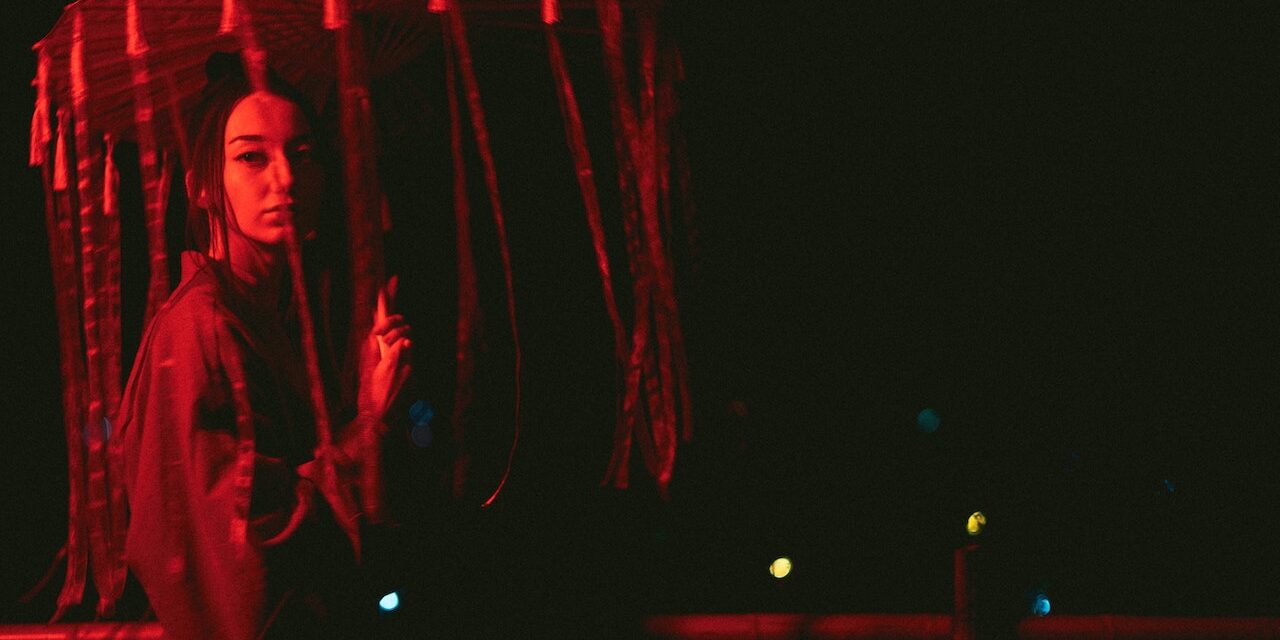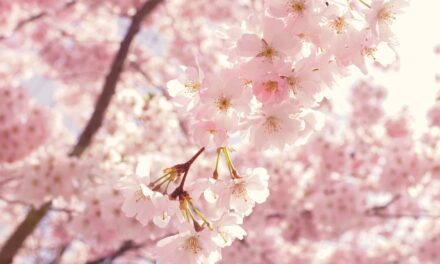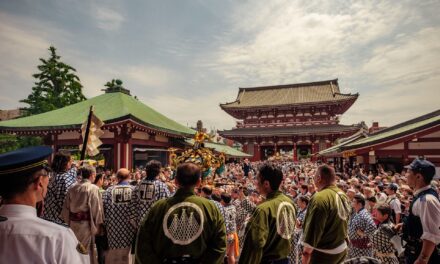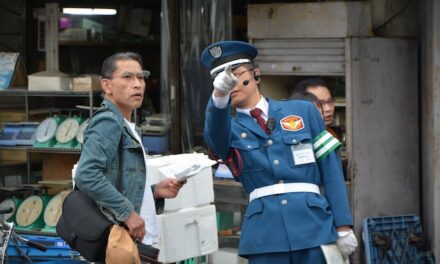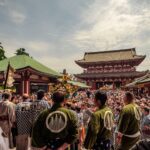Japan has a plethora of traditions, and these traditions span many centuries.
These include the elegant beauty of the tea ceremony to the colourful spectacle of the cherry blossom festival.
Japanese culture is full of fascinating customs and rituals.
However, alongside these more well-known traditions, some are – shall we say – a little unusual.
We’ll be exploring five of the strangest and most intriguing traditions in Japanese culture, from KFC on Christmas Day to the Shukatsu Matsuri.
Here are 5 Bizarre Japanese Traditions that will shock you.
Table of Contents
KFC for Christmas Dinner

For many people around the globe, Christmas dinner is often served with turkey and other variety of dishes.
But in Japan, the festive dinner is associated with a very different kind of food: fried chicken from Kentucky Fried Chicken.
This unusual tradition dates back to the 1970s when KFC launched a marketing campaign aimed at Japanese consumers.
The slogan “Kurisumasu ni wa kentakkii!” (“Kentucky for Christmas!”) struck a chord with the Japanese, and since then, eating KFC on Christmas Day has become a popular custom.
To experience this tradition for yourself, you’ll need to order your KFC meal in advance, as demand is high on Christmas Day.
Since it’s a common tradition in Japan to order KFC for Christmas, you may have to order weeks in advance to secure an order.
Many Japanese people opt for the “Christmas barrel or Party Barrel Holiday Dinner Set” – a special meal deal that includes fried chicken, sides, and a cake.
And if you’re really lucky, you might even get your hands on a limited-edition KFC Christmas-themed bucket!
So when you’re in Japan during the Christmas holidays, you may want to participate in this Bizarre Japanese Tradition and give it a try!
Kanamara Matsuri (Festival of the Steel Phallus)
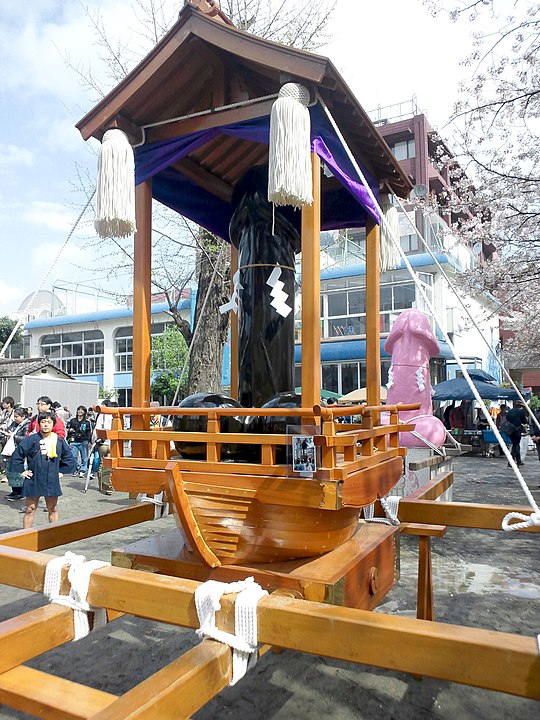
The Kanamara Matsuri- or ‘the Festival of the Steel Phallus’ – is a rambunctious celebration that takes place every spring in Kawasaki – a city just outside Tokyo.
The origins of the festival are shrouded in mystery, but it’s believed to have its roots in the Edo period (1603-1868) when sex workers would visit a local shrine to pray for protection against sexually transmitted diseases.
Today, the festival is a lively and colourful affair, with participants carrying giant phallus-shaped mikoshi (portable shrines) through the streets.
As the portable shrine is being carried across the street, many bystanders would crowd the streets to witness the strange but interesting parade.
If you want to experience the Kanamara Matsuri for yourself, be prepared for a wild and raunchy time!
The festival is open to all, and participants are encouraged to join in the fun by carrying their own miniature phallus-shaped mikoshi.
You’ll also find plenty of street food stalls and souvenir stands selling all manner of phallic-themed trinkets.
You can taste foods that are shaped like penises while wearing a prop mask with a phallic-shaped nose on it.
Watching people dancing to a phallic idol and chanting blessings is definitely a bizarre Japanese Tradition.
It’s amazing how the Japanese are comfortable with these taboos.
Naki Sumo (Crying Sumo)

Naki Sumo- or “crying sumo” – is a tradition that’s been practised in Japan for many centuries.
The idea is simple: two sumo wrestlers face off against each other, and the first one to make the baby they’re holding cry is declared the winner.
It’s believed that the tradition is rooted in the belief that making a baby cry can ward off evil spirits and bring good luck.
You’ll find sumo wrestlers dressed in traditional loincloths, holding babies in their arms and making silly faces to try and elicit a cry.
The atmosphere is festive and fun, with plenty of food and drink stalls to keep you fueled up for the day.
If you want to witness Naki Sumo in action, you’ll need to head to a local shrine or temple during the annual Children’s Day festival (May 5th).
It’s still strange to see two massive-sized men holding babies in ceremonial clothing, trying to make them cry to ‘Win’.
Inemuri (Sleeping on duty)
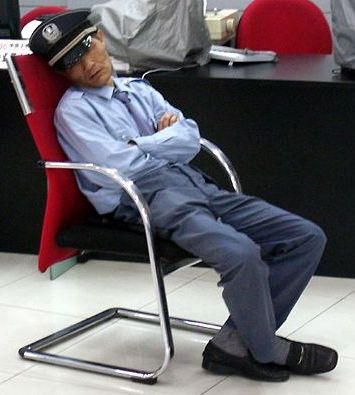
Inemuri is a Japanese cultural practice that refers to the act of being physically present in a situation while being mentally absent.
It is often translated as “sleeping on duty” or “present while absent.”
Inemuri is not limited to the workplace as it can be seen in various aspects of Japanese society, such as in schools or public transportation.
For instance, it is not uncommon to see people sleeping on trains or buses in Japan, even if they are not necessarily tired.
While Inemuri may seem like a lack of discipline or laziness to people all over the world, it is actually seen as a sign of dedication and hard work in Japanese culture.
It is a way of showing that you are so committed to your work or other responsibilities that you’ve given up sleep to meet your objectives.
Because of that, you’re exhausted from giving your best at work, so you’re taking a short nap before going back into the grind.
However, it is important to note that inemuri is not always acceptable or appropriate in every situation in Japanese culture.
In some settings, such as during a meeting or presentation, it would be considered rude and disrespectful to appear to be sleeping.
It is definitely a bizarre Japanese tradition to see your co-workers falling asleep at work, and being a cultural norm to do so.
Shukatsu Matsuri (Funeral Festival)
Shukatsu Matsuri is one of the uniquely bizarre Japanese traditions that’s all about testing out your own Coffin before you die.
Shukatsu is defined as ‘Preparing for one’s end’ and this festival is held on December 16 of each year.
During this festival, funeral companies would enlighten the public about the process of handling the deceased.
You’ll find showrooms displaying many different caskets and you’ll also be able to try these caskets out by lying in them.
As you’re trying these coffins, there will be options to close the coffin or close the transparent acrylic covers to simulate how it feels as you’re lying in your funeral.
Apart from trying the caskets out, participants could also try out different styles of burial make-up and outfits.
After which, you’ll be able to take your own funeral portrait to see what you would look at the funeral.
Needless to say, this is one of the morbid traditions in Japan that is not exactly common per se, but it exists and it is bizarre indeed.
Morishio (Salt Ritual)
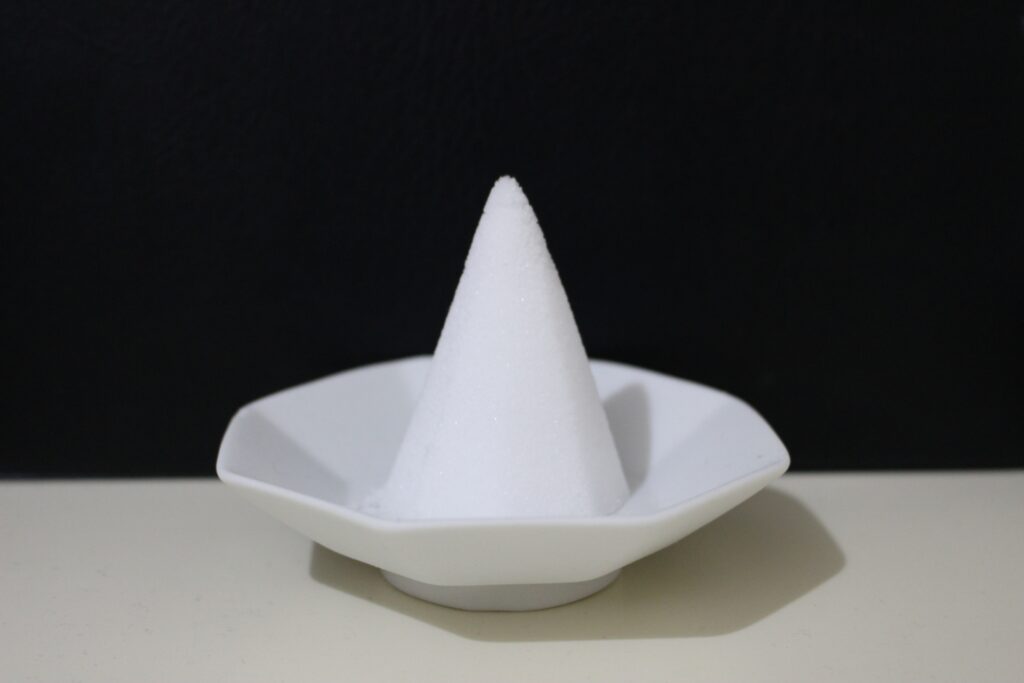
The practice of placing piles of salt outside of sushi shops is actually related to a Japanese superstition.
It’s believed that salt can ward off evil spirits or negative energy, and it’s often used to purify or cleanse a space.
In Japan, salt is considered to have strong spiritual properties.
It’s believed to have the power to purify and cleanse, and it’s often used in religious and spiritual ceremonies.
By placing piles of salt outside of sushi shops, it’s thought that the negative energy or “bad luck” that may be associated with raw fish or the restaurant business can be neutralized.
The salt is typically placed in a small pile outside the entrance to the sushi shop, often in a wooden container or on a tray.
It’s also common to see salt piled up around the edges of a tatami mat, which is a traditional Japanese flooring material.
While this practice may seem unusual to outsiders, it’s a common sight in Japan, particularly in the sushi industry.
It’s a way for sushi chefs and restaurant owners to show their respect for tradition and to ensure that their business is protected from negative energy or bad luck.
It’s a testament to the spiritual beliefs and superstitions that are deeply ingrained in Japanese society, and it’s a tradition that has been passed down for generations.
You may see piles of salt outside of other types of shops in Japan as well, particularly those that deal with food or traditional crafts.
You might see salt piled up outside of a rice cracker shop or a tea house, as these types of businesses are also associated with Japanese traditions and customs.
Additionally, you may see salt placed outside of temples or shrines as a form of purification or cleansing.
In general, the practice of using salt as a form of spiritual purification is deeply ingrained in Japanese culture.
While it may seem unusual to those who are unfamiliar with Japanese customs, it’s an important part of the country’s cultural heritage.
So the next time you see salt being placed outside of a restaurant, don’t be alarmed as it’s a strange but fascinating Japanese tradition that has been around for many centuries.
Conclusion
Japan is a country full of surprises, and its traditions are no exception. From KFC on Christmas Day to the Kanamara Matsuri, these five unique customs offer a fascinating insight into Japanese culture and history.
By understanding these traditions, you would get a better picture of what Japan is like, and appreciate the culture even more.
It will also make your travel to Japan a lot more enjoyable when you’re aware of these bizarre Japanese traditions.
- Which strange Japanese tradition shocked you the most?
Tell us in the comment section below and share this with your friends who
don’t believe the bizarre Japanese tradition you’ve shared with them.

